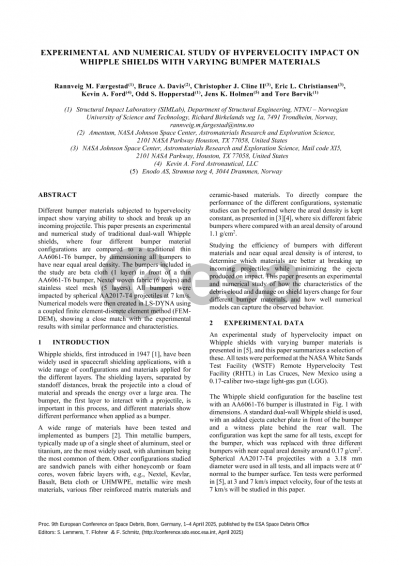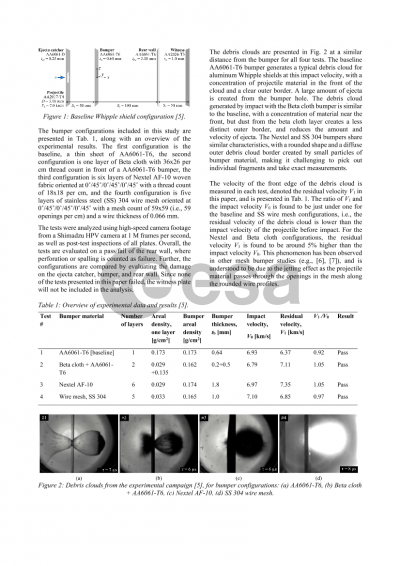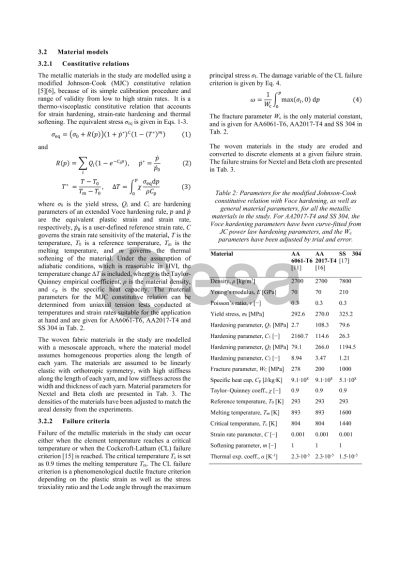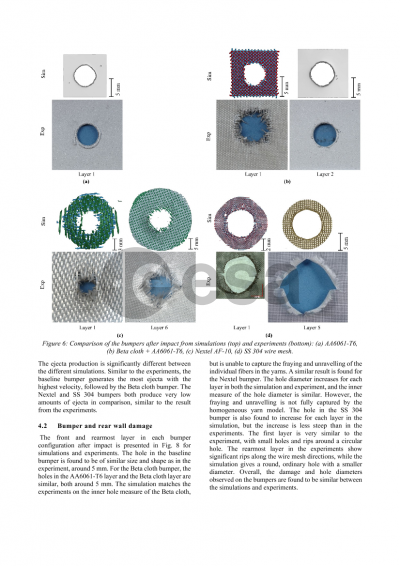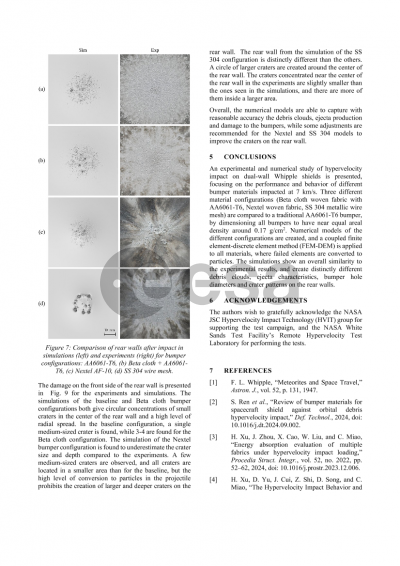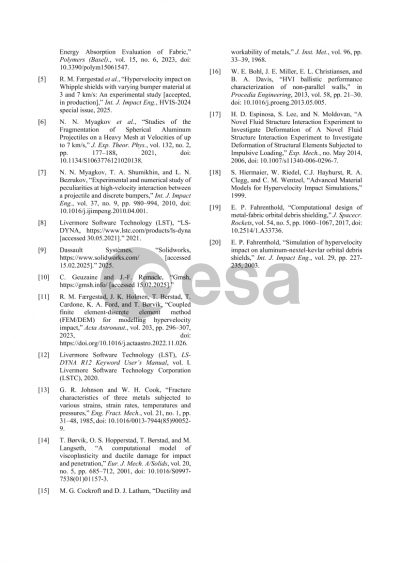Document details

Abstract
The performance and behavior of various bumper materials subjected to hypervelocity impact is of high interest, as different materials show varying ability to shock and break up an incoming projectile, and can produce varying amounts of ejecta on impact. Traditional dual-wall Whipple shields are studied in this paper, where five different bumper material configurations are compared to a traditional thin aluminum AA6061-T6 bumper, by dimensioning all bumpers to have near equal areal density. The bumpers included in the study are aluminum mesh (8 layers), steel mesh (5 layers), Nextel woven fabric (6 layers), beta cloth (1 layer) in front of a thin AA6061-T6 bumper, and open-cell aluminum foam with an AA6061-O front face sheet. All bumpers were impacted by spherical AA2017-T4 projectiles at 7 km/s. An ejecta catcher was placed in front of the bumpers to catch the ejecta from each test, and a witness plate was placed behind the rear wall. The tests are evaluated based on high-speed video footage of the debris cloud, as well as observed damage on each shield layer, showing distinctly different results and characteristics for each configuration. Numerical models are established for the different bumper configurations, and the results are found to be similar to the experiments.
Preview
